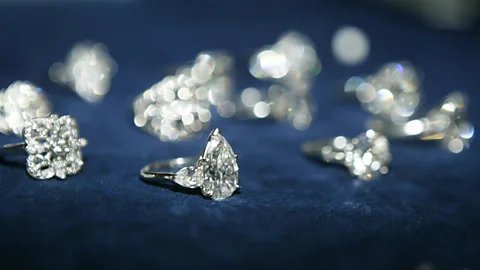
Introduction
Diamonds have for some time been the image of extravagance, love, and status. From ancient civilizations to contemporary times, these sparkling diamonds have held a special place in our hearts and cultures. However, today, there’s another competitor in the diamond world: cultures and lab grown diamonds. These stones are gaining traction for their beauty as well as for their ethical and environmental advantages. How about we jump into how various cultures see lab-grown diamonds and what this means for what’s in store.
What Are Lab-Grown Diamonds?
Lab-grown diamonds, also known as synthetic or refined diamonds, are created in controlled environments utilizing advanced innovation. Dissimilar to natural diamonds, which form north of millions of years under the Earth’s surface, lab-grown diamonds can be delivered surprisingly fast. In spite of their origins, these diamonds are chemically, physically, and optically identical to natural ones.
The Advancement of Lab-Grown Diamonds
The excursion of lab-grown diamonds began in the early twentieth 100 years with experiments that laid the groundwork for today’s innovation. Initially, these diamonds were primarily utilized for industrial purposes. Be that as it may, as innovation advanced, pearl quality lab-grown diamonds became available, making their way into the adornments market and capturing the premium of customers worldwide.
Cultural Points of view on Diamonds
Historical Significance of Natural Diamonds
Diamonds have been valued over the entire course of time. Ancient texts and artifacts reveal their utilization as images of force and heavenly security. In India, diamonds were viewed as gifts from the divine beings, while in Europe, they became an indication of royalty and wealth. This historical significance has profoundly affected how various cultures view diamonds today.
Diamonds in Current Culture
In current times, diamonds are often associated with achievements like engagements and anniversaries. They are seen as immortal images of adoration and commitment. Be that as it may, the ascent of lab-grown diamonds is challenging this discernment, offering a more affordable and sustainable alternative without settling on brilliance.
Lab-Grown Diamonds in Western Cultures
Acceptance and Popularity
In Western cultures, lab-grown diamonds are gradually gaining acceptance. Initially met with distrust, they are currently celebrated for their ethical and environmental advantages. Major adornments retailers have started offering lab-grown choices, and purchaser awareness is on the ascent. The shift is driven by a developing craving for transparency and sustainability in extravagance purchases.
Market Patterns and Inclinations
The market for lab-grown diamonds in Western nations is expanding. Purchasers are increasingly drawn to these diamonds for their lower cost and the assurance of ethical obtaining. This shift is reflected in sales patterns and the developing number of brands specializing in lab-grown diamonds.
Lab-Grown Diamonds in Asian Cultures
Traditional Values vs. Present day Innovations
In many Asian cultures, diamonds are saturated with tradition. The idea of lab-grown diamonds is a new and once in a while controversial idea. Traditional values often emphasize the natural origins of valuable stones, leading to cautious acceptance of lab-grown alternatives. Be that as it may, more youthful generations are more open to these innovations, considering them to be a mix of innovation and tradition.
Regional Market Dynamics
Different Asian districts have varying attitudes towards lab-grown diamonds. In nations like Japan and South Korea, there is a developing acceptance because of high shopper awareness and the impact of global patterns. Meanwhile, in more traditional markets, the adoption is more slow, impacted by cultural view of natural versus synthetic.
Lab-Grown Diamonds in Center Eastern Cultures
Cultural and Strict Implications
In the Center East, diamonds have significant cultural and strict importance. The introduction of lab-grown diamonds has prompted conversations about their legitimacy and the authenticity of their value. While some view them as a cutting edge alternative, others remain skeptical about their place in traditional practices.
Adoption Rates and Market Reactions
The reaction to lab diamonds in the Center East varies. In more moderate segments of society, there is developing interest, while traditionalists favor natural stones. The market is as yet creating, with future patterns probably affected by broader global acceptance and changes in purchaser attitudes.
Monetary Impact of Lab-Grown Diamonds
Cost Comparison with Natural Diamonds
One of the most unquestionable cases for lab-grown diamonds is their expense. They are typically estimated 20-40% lower than natural diamonds of comparable quality. This cost contrast makes them an attractive choice for customers who want the beauty of diamonds without the strong sticker price.
Impact on the Traditional Diamond Industry
The ascent of lab-grown diamonds is shaking up the traditional diamond industry. Natural diamond costs are feeling the squeeze as purchasers become more aware of the advantages of lab-grown stones. This shift is provoking traditional players to adapt and explore new plans of action to stay cutthroat.
Environmental and Ethical Considerations
Environmental Advantages of Lab-Grown Diamonds
Lab-grown diamonds offer significant environmental advantages. Traditional diamond mining can cause broad ecological damage, including habitat obliteration and soil disintegration. Lab-grown diamonds, then again, require minimal environmental disturbance, making them a more sustainable choice.
Ethical Implications and Social Obligation
Ethically, lab-grown diamonds address many issues associated with natural diamond mining, like clash diamonds and unsafe working circumstances. By picking lab-grown, customers can guarantee their purchase does not add to these issues, aligning their values with their purchasing choices.
Future Patterns in Lab-Grown Diamonds
Innovations and Technological Advances
The eventual fate of lab-grown diamonds is brilliant with continuous technological advancements. Innovations underway techniques guarantee much more excellent stones at diminished costs. Additionally, new applications for lab-grown diamonds in various ventures are probably going to arise, expanding their market potential.
Expectations for Cultural Acceptance
As lab-grown diamonds become more mainstream, their cultural acceptance is supposed to develop. With increasing buyer education and moving values towards sustainability and morals, lab-grown diamonds are probably going to turn into a standard choice in the gems market across different cultures.
Conclusion
Lab-grown diamonds address a fascinating development in the world of extravagance. As they keep on gaining traction across various cultures, they challenge traditional discernments while offering a more ethical and sustainable alternative. Whether driven by monetary advantages, environmental worries, or developing cultural values, lab-grown diamonds are ready to play a significant job coming soon for gemology. Embracing this new era, we wind up at the convergence of tradition and innovation, where the sparkle of a diamond carries a message of adoration as well as a commitment to a superior world.





